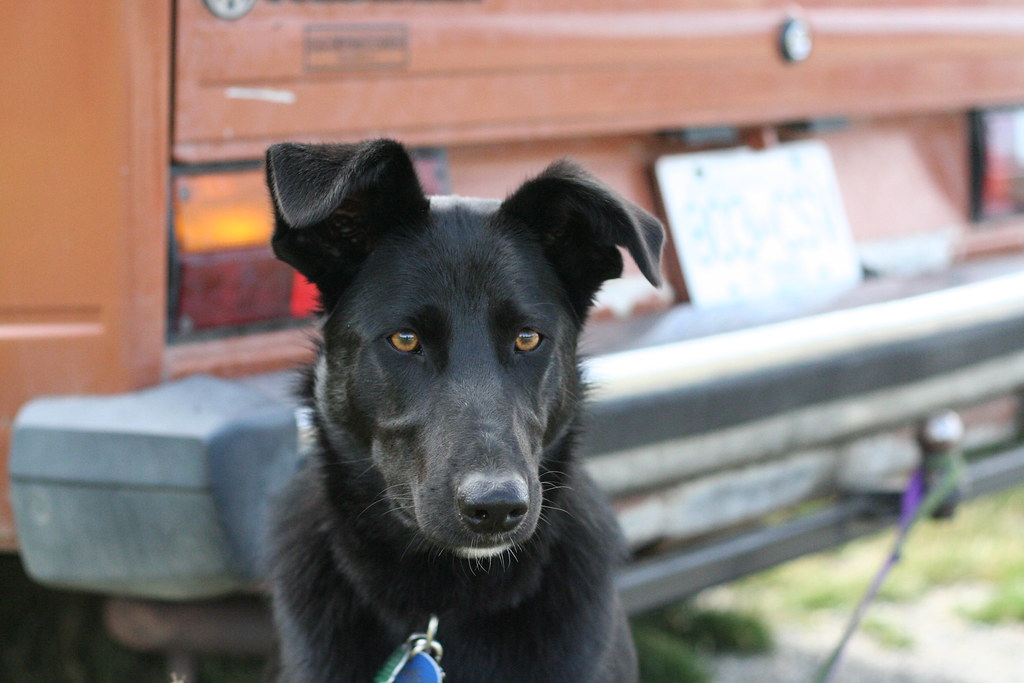Sporting a significantly smaller form-factor than the 300D, the 350D is quite small, roughly the same size as every mainline Digital Rebel released since. Sadly this means it was the body that introduced the small, crimp-style handgrip that anyone will large hands will find uncomfortable after extended use. Personally I can only fit 3 fingers on the grip in my natural shooting position, with my pinky being forced underneath the body for lack of anywhere else to go. The outer body is made up entirely of plastic, with the smooth texture making it feel cheap. Despite this, I don't have any qualms about its durability. Though I never dropped it, I bumped, dinged, and knocked it more times than I can count. The body isn't weather sealed, but after being rained on countless times for short periods (short period defined as however long it took to put a plastic bag over it), I never had any issues.
As a Rebel body, the 350D lacks the rear control dial of the more advanced line, instead having four directional buttons surrounded a 'set' button in the middle. Though I prefer using the clickwheel of the more advanced bodies, the four-button layout works well and is quite intuitive - each of the four buttons has a dedicated function (ISO, metering, AF, WB) that brings up a menu screen on the main LCD, and pressing the set button will confirm changes.
 |
| Note the small main LCD and four-way buttons |
The main screen on the 350D is small, even by the standards of the time. At 1.8", it's difficult to see much detail in shots, making the playback zoom function virtually mandatory for checking sharpness. The main LCD does at least have 5 levels of brightness that can be set, though in bright sunlight it becomes almost impossible to see. On the other hand, this disadvantage is somewhat diminished since the small size of the screen it makes easy to shield from sunlight with your hand, something I find more difficult to do with the 3.0" screen of the 50D. The 350D was also the last in the Rebel series to feature a monochromatic LCD (think digital watch) to show current camera and exposure settings. Personally I prefer this over the modern setup of using the main LCD as the monochrome screen is easily visible in sunlight, and uses less power.
Much like the LCD, the 350D features a very small optical viewfinder with 0.80x magnification, a downgrade from the 300D's 0.88x. The viewfinder's eyecup is rather flimsy and tends to fall off. I had mine secured witha single piece of duct tape for two years before I lost it for good; the eyecups on the upper level bodies don't fall off nearly as easily. When peering through the viewfinder, you'll get a sense of tunnel vision since you'll be seeing more black border than actual viewing area. There's a slightly purple colour cast as well, though that's little more than a visual distraction. The small viewfinder makes manual focus difficult, especially with slower lenses, or at macro focus distances. And with no live view available, this can be problematic to say the least, unless you want to trust the camera's AF system.
 |
| Proper manual focus with adapted lenses can be difficult to achieve with the small viewfinder |
 |
| The AF system works, it's just inconsistent |
 |
| ISO 1600 can look pretty good when exposed to the right |
What's still good
- Image quality still holds up well
- Small, light, and cheap
- Instant startup
- Dedicated rear status monochrome LCD
What's lacking
- Small 1.8" LCD
- 7-point AF system has not aged well
- Smallest viewfinder on a Canon DSLR
- low framerate of 3fps
- Small handgrip
- No self-cleaning sensor
- Low shutter-count rating
To sum up, unless money is incredibly tight, you're better off spending another $20-$30 to get at least and XTi (or even a 20D), where the Autofocus and LCD are drastically improved. You'll have to get at least and XSi to see a larger optical viewfinder in a rebel body, though. To be fair, the 350D is still a good body in its own right, but with all the options out there I can't really see a reason why it would top anyone's list...except the one mentioned in the opening sentence of this paragraph. However, even that is cancelled out by the 350D's usage of Compact Flash memory cards, which cost far more per GB than the SD cards used by the XSi (and newer) bodies in the series. In short, skip it. Unlike the 20D, there isn't even a niche the 350D can fill.
 |
| At that point, I had run out of cameras to take this picture with |
For those wondering, the next review will likely be the EOS 5D.


Nice retro review of the 350D. I just bought it with the kit lens, EF 50 mm 1.8, 100 mm macro USM and a battery grip for 300 euros. Let's see if I can get some good results out of it!
ReplyDelete